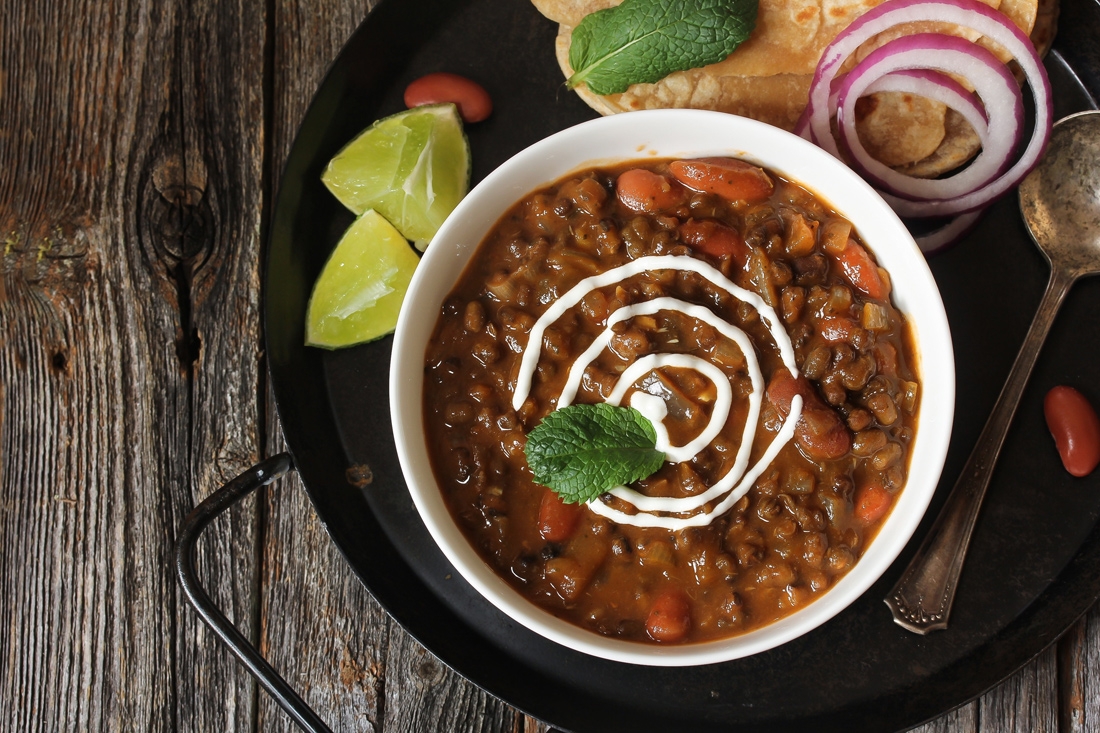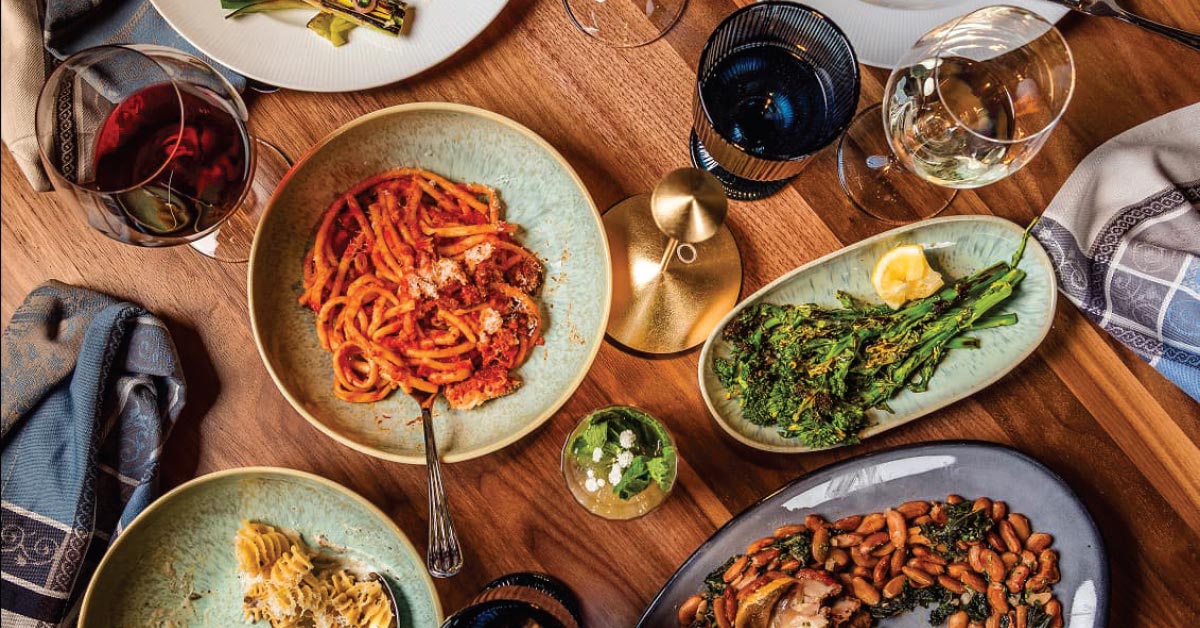Whether the words “home cooking” make you cringe or recall your favorite Steak Au Poivre recipe, we all have strong feelings about it. Some claim to be ramen noodle experts, while others use every square inch of their counter space to store the latest kitchen gadgets. With a rise in one-pot meals and BuzzFeed Tasty videos over the past year, it’s never been easier to call yourself a home chef.
Art of the Table owner Amy Ruis attributes the rise in cooking at home to the 2008 financial crisis. “The recession is fresh in my mind still as the turning point of home cooking’s resurgence,” Ruis said. “While people still go out a lot, the turning point of the economy then put people in a place where they needed to watch their dollars — food dollars, especially. People started having more dinner parties at home again — saving money on the food, wine and cocktails — while still enjoying life.”
To add fuel to this fire for home food prep, a rise in Instagram fitness influencers and nutritionist experts continues to motivate the average American to get off the couch. It may seem like everyone in your social media circle has tried Whole30 or the 21-Day Fix. That kid from college who gained the “Freshman 50” has gone full-on Paleo and shows off mouth-watering dishes on his Snapchat story. In 2018, it’s cool to cook.
Bob Schultz, professor at the Secchia Institute for Culinary Education, owner of Son-in-Law Products (a gourmet condiment line) and former chef at Steelcase Corporation, cites health as one of the main reasons for more home cooking.
“Not many people have a deep fat fryer to cook French fries, for example. So the better option would be a baked or mashed potato,” Schultz said. “The biggest trend in cooking right now is more people are cooking at home. People choose more vegetarian and healthier options, especially with vegetables (like cauliflower) as low-carb substitutes. Diabetes, obesity and many other health problems contribute to what we eat.”
Subscription services like Blue Apron and Hello Fresh bring high-quality ingredients and gourmet recipes to your doorstep — perfect for those of us who don’t want to spend our free time in line at the grocery store. And if that’s not easy enough for you, programs like Shipt allow customers to order their groceries online and have them shipped right to their house, all of which makes it that much easier to cook at home.
Karen Bryan of Making Thyme Kitchen claims that knowing what ingredients go into your food is one of the perks of cooking. The mission of her business is to create “on-the-go” food that tastes as good as a home-cooked meal.
“I think home-cooked food does taste better,” Bryan said. “It’s not reheated, not dried out, and compared to restaurant food it doesn’t contain as much salt or fat. You have control over what you are putting in your body. You know if your ingredients are fresh. It’s a creative process, and it’s relaxing.”
If you’re intimidated by home cooking and don’t know where to start, begin with the basics: fresh ingredients and a good knife. Go easy on collecting all the newest gadgets, because they’re not necessarily worth it.
“The basics will get used more and make cooking easier and thus more enjoyable,” Bryan said.
However, the Instant Pot your friend won’t stop bragging about does serve a purpose.
“Admittedly, I do like the instant pot for some occasions, especially roasts, braised items and convenience. Huge benefits with the sous-vide too — food retains the nutrients and vitamins that can be lost in other methods of cooking,” Bryan said.
While the internet has made access to gourmet recipes easier than ever, cookbooks are still on the rise.
“Cookbooks are worth every penny,” Ruis said. “While I love having the internet at my fingertips, I love perusing a cookbook for inspiration.”
Pinning a recipe to your “Try Later” Pinterest board just doesn’t have the same feeling as flipping the page of a well-worn cookbook and finding oil splatters and crumbs from the last time you tried making something.
“I’ve made my own 3-ring binder ‘cookbooks’ that are still my favorite resources,” Ruis said. “My favorite cookbook is Quick and Easy Thai by Nancie McDermott.”
With a solid cookbook in one hand and a precise, sharpened blade in the other, it’s time to get cooking. The fantastic benefit of making a meal at home is that there are no expectations (unless, of course, you’re cooking for a party of eight). All it takes to achieve home cooking success is the bravery to throw yourself into the mess of it, knowing that it won’t always turn out as picture-perfect as the recipe.
“Try new things, start out easy, use that Betty Crocker cookbook your mom gave you, then branch out,” Ruis said. “French, Italian, Greek — it’s not that hard, you just have to pick the recipe that looks manageable and then push yourself now and then.”
Most importantly, start with fresh, quality ingredients. It’s hard to mess those up.
For the home chefs ready to take their cooking skills to the next level (with the possibility of owning a restaurant or working in the restaurant industry), consider a degree from the Secchia Institute. The Culinary Education program grants students an Associate Degree of Applied Arts and Sciences, which can lead to an exciting career in baking, catering, banquet organization or restaurant operations.
Must-Have Items for Home Chefs
A good knife, a meat thermometer and a non-stick saute pan. —Karen Bryan of Making Thyme
Ample lighting, high-quality sharp knives (like Wusthof) and quality ingredients — olive oil, balsamic vinegar, harissa sauce, great cheeses, superior meats and fish — don’t skimp on the good stuff. —Amy Ruis of Art of the Table
For the real home chefs that want to go to the next level, a sous-vide machine. The other important element is the setting, which creates the mood. Food creates a perfect enhancer to enjoy the simple things in life. Time is the last thing I would say is important. —Bob Schultz of Secchia Institute





